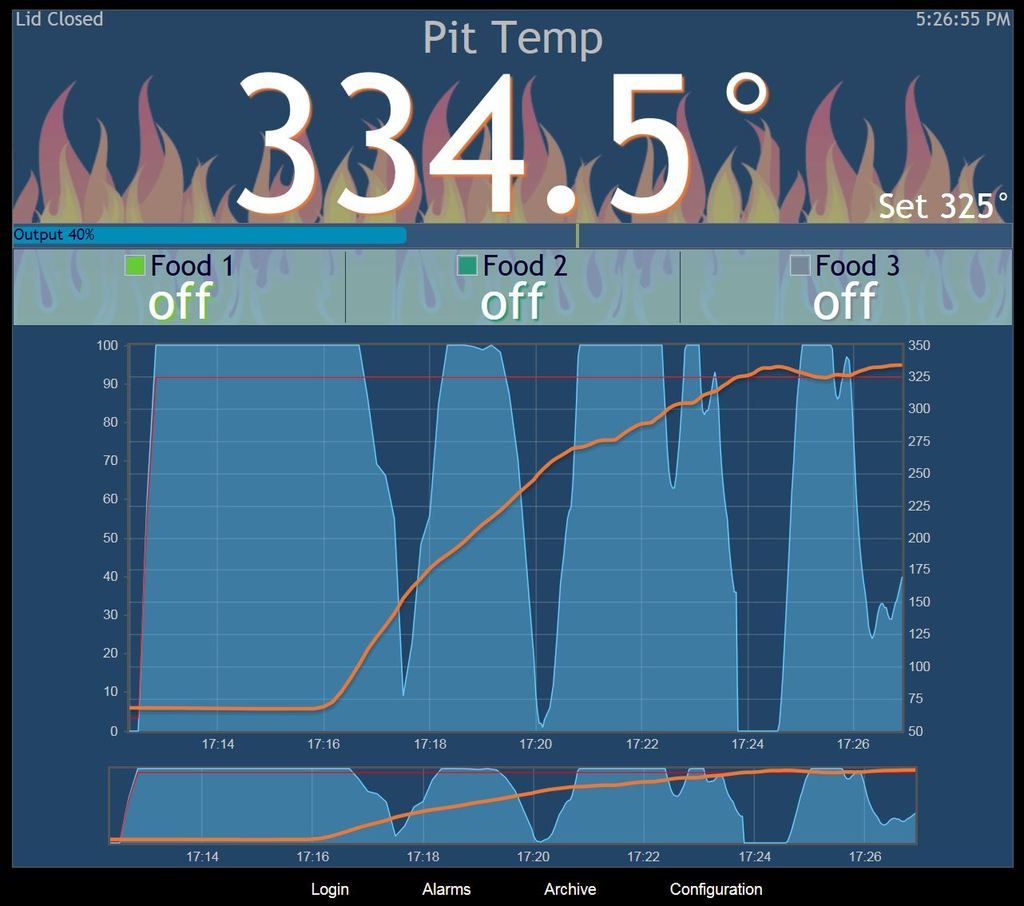NateSebold
TVWBB Member
Wondering if any of you might take a look at some cooks and offer advice on my setup.
I have an El Cheapo Brinkmann heavily modded to be pretty air tight with an RD3 (thanks Ralph) hooked up to flexible copper tubing "airburner". I usually run it with a weber 4 hole top vent wide open and then the only other air is coming through the RD3. Everything else is pretty well sealed with silicon gasket.
For all these cooks I'm using 30/70 lump/charcoal with just a couple but hunks of apple.
For my water pan.. I used rocks and bricks for the first cook. And nothing for the second and third.
My main questions are do I need a more powerful blower? (I am currently running the standard blower)
Should I close up the top vent more? (How will that impact airflow? Will I keep more heat in?)
Do I need the top vent open to pull air through to the fire?
Is this just a result of no insulation in my smoker and losing heat as the temperature dropped across these three burns?
Would using something in the water pan help? (sand, rocks,,... i was thinking of making a heat resistant concrete mold specifically for my water pan)
You can see from this brisket burn that the thing holds temp pretty well. It stayed right at the set point for like 5 hours before I had to add more charcoal to finish it off in my brisket smoke here. It recovered well after I crutched it... The fan did pretty well except for when I ran low on charcoal. The airtemps were probably in the 70s

For the next one I did ribs, the air temp was a bit lower 60s but the thing did a good job with the set point but had to run the fan quite a bit more and I did have to add more charcoal so the same fuel load only lasted 3 hours here versus the 5 in the previous cook.

Last one I was doing a butterfly chicken and cranked my set point up to 300 and it took nearly an hour to get there and had a hard time staying up that high. The air temp probe I added here so it was in the 50s for the whole cook. It was a shorter cook but when I took it off I was probably about an hour away from needing to add more fuel.

I have an El Cheapo Brinkmann heavily modded to be pretty air tight with an RD3 (thanks Ralph) hooked up to flexible copper tubing "airburner". I usually run it with a weber 4 hole top vent wide open and then the only other air is coming through the RD3. Everything else is pretty well sealed with silicon gasket.
For all these cooks I'm using 30/70 lump/charcoal with just a couple but hunks of apple.
For my water pan.. I used rocks and bricks for the first cook. And nothing for the second and third.
My main questions are do I need a more powerful blower? (I am currently running the standard blower)
Should I close up the top vent more? (How will that impact airflow? Will I keep more heat in?)
Do I need the top vent open to pull air through to the fire?
Is this just a result of no insulation in my smoker and losing heat as the temperature dropped across these three burns?
Would using something in the water pan help? (sand, rocks,,... i was thinking of making a heat resistant concrete mold specifically for my water pan)
You can see from this brisket burn that the thing holds temp pretty well. It stayed right at the set point for like 5 hours before I had to add more charcoal to finish it off in my brisket smoke here. It recovered well after I crutched it... The fan did pretty well except for when I ran low on charcoal. The airtemps were probably in the 70s
For the next one I did ribs, the air temp was a bit lower 60s but the thing did a good job with the set point but had to run the fan quite a bit more and I did have to add more charcoal so the same fuel load only lasted 3 hours here versus the 5 in the previous cook.
Last one I was doing a butterfly chicken and cranked my set point up to 300 and it took nearly an hour to get there and had a hard time staying up that high. The air temp probe I added here so it was in the 50s for the whole cook. It was a shorter cook but when I took it off I was probably about an hour away from needing to add more fuel.



